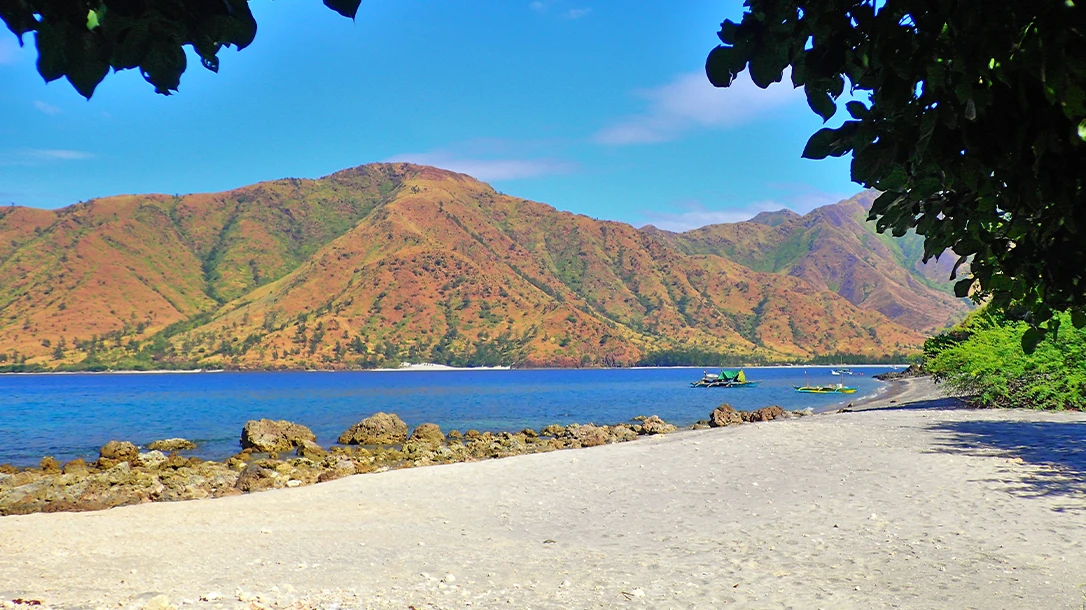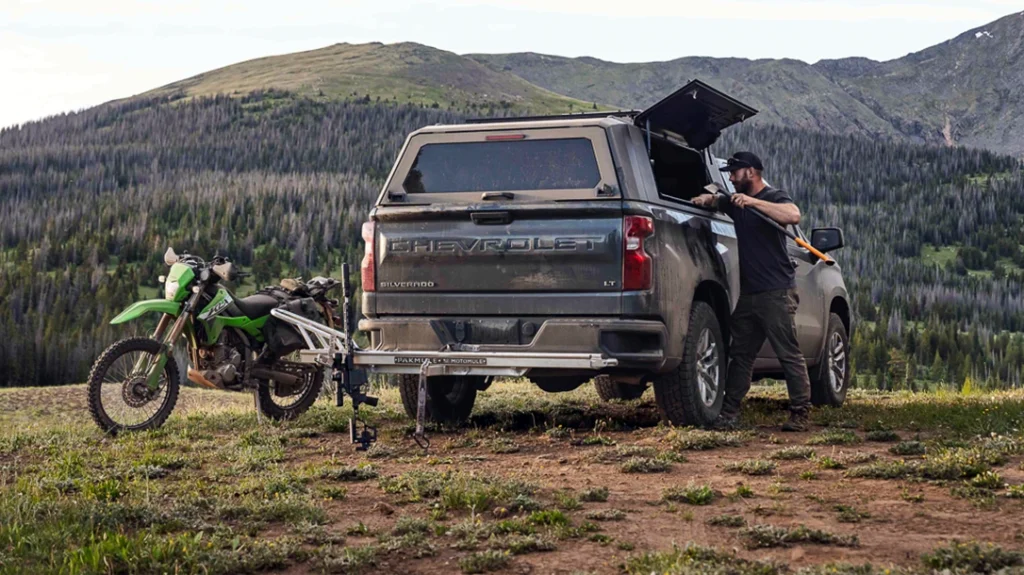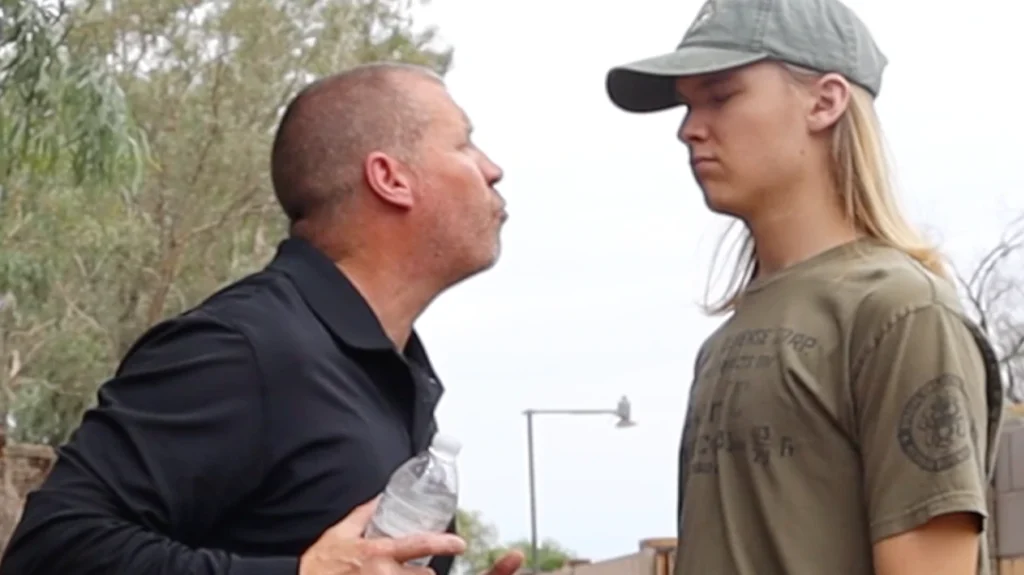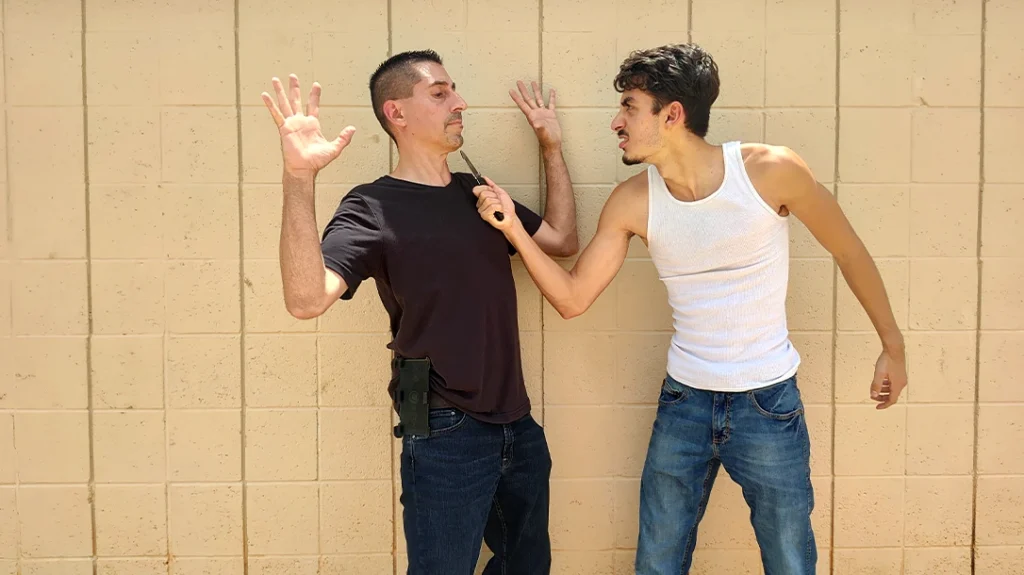Years ago, I traveled to one of my favorite adventure destinations on the planet. It’s a place I’ve been to several times for photography, jungle survival training, food, the scenery, overall adventure, and the people. The Philippines!
From Islands to Alliances
The Philippines is a Pacific archipelago of 7,641 islands, only a fraction of which are inhabited. The rest are wild and unnamed. Its coasts stretch for thousands of miles, split into Luzon, Visayas, and Mindanao. History carved deep scars here: Spain ruled for centuries, then the United States took control in 1898. Independence was achieved in 1946, but the alliance with America remained intact. Subic Bay in Zambales became the largest U.S. naval base outside the mainland, a fortress of steel and saltwater. Even after the U.S. left in 1992, Subic’s pull endured—anchoring defense, trade, and an unshaken partnership.
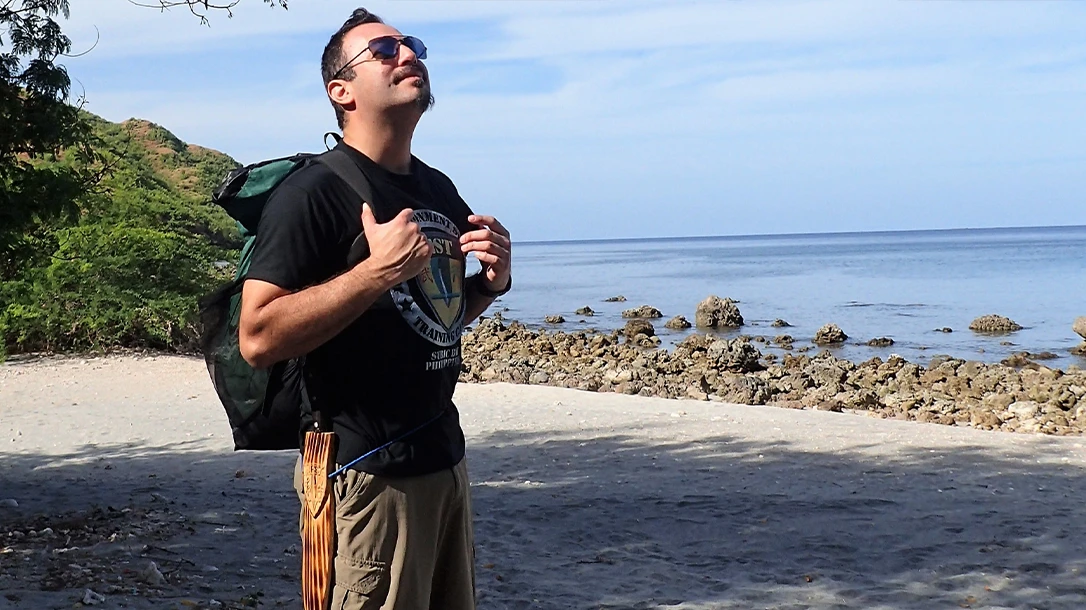
Advertisement — Continue Reading Below
Adventure with Awareness
The Philippines dazzles with its islands, culture, and people—welcoming, resilient, and quick to share a smile. Yet the U.S. and other governments issue travel advisories, not for the nation as a whole, but for specific areas in the far south. Parts of Mindanao and the Sulu Archipelago have long faced unrest, with groups like Abu Sayyaf linked to kidnapping for ransom. For most travelers, the Philippines remains a place of warmth, wonder, and unforgettable adventure.
The Location: The Cove Born of Fire
Nagsassa Cove in Zambales is a beach born from fire on the coast of the South China Sea. When Mount Pinatubo erupted in 1991, ash buried the coast and reshaped it into today’s wide, gray shoreline. Agoho trees sprouted in the aftermath, lining the cove like guards. Nagsassa sits farther from the kick-off point, demanding a longer boat ride of about 2,5 hours one way.
The sea stays calm, the sand holds steady, and the mountains guard the horizon. By night, stars blaze unchallenged. These qualities are what make Nagsassa Cove desirable to both local and international visitors.
Advertisement — Continue Reading Below

Know Your Ride: The Banca
The deal was back on shore when many boatmen were competing for my business. It was simple. Drop me off at the cove, and pick me up three days later. That’s a bit unsettling to most people, I know. In a world where everyone’s a stranger and sees potential dollar signs, who do you trust? Yourself!
The Filipino banca, or outrigger canoe, is a narrow hull balanced by bamboo arms. Built for fishing and island‑hopping, it rides steady even when the seas get restless. Don’t expect speed or comfort—expect grit, efficiency, and surprising stability. These boats aren’t yachts, but they’ll carry you across bays with saltwater confidence. Oh, and you’ll get wet!
Advertisement — Continue Reading Below
Welcome to the Playpen
After what felt like hours on a wet, slippery boat ride, the cove finally came into view. As we got closer, I noticed the beach was divided into long rectangular sections, resembling mini-playpens or cages. Each section had a person eagerly waiting to greet me on the shore, and my unease grew. Suddenly, I felt as I had when I first tried to secure a boat at the earlier beach. Each section belonged to different individuals or families working for my business. There was music in the air, along with tourists and vendors selling food and drinks. It struck me: I had come all this way only to find what I was trying to avoid.
I shook my head and told the captain I wanted to go somewhere more secluded. A place where I could cook, craft, and hang my hammock—a place that felt wild. This location felt more like an overnight dog park and camping site for adults. Precisely what I wasn’t looking for in a camp!
Captain’s Forbidden Camp
Like a scene from the movies, the captain exclaimed he knew of a place. It wasn’t part of the Nagsassa Cove camp system, and it belonged to the indigenous people, the Aetas. He said it had bamboo, trees, and a makeshift bamboo-and-rubber-tubing faucet with water straight from the jungle. The catch was that he didn’t know how the locals would react to me. Or worse, if anyone would come from the sea to kidnap me. I guess he was a little worried about me, and so was I. And since I wasn’t paying him half, rather, the full amount upon pick-up, he was concerned about his investment.
Advertisement — Continue Reading Below
About 30 minutes later, we arrived. The camp was perfectly secluded, and there were old, abandoned, makeshift bamboo tables. The captain told me it was an old fishing camp where fishermen caught some shut-eye during the day. They cooked and shipped out to sea for all-night fishing.
I wasted no time and started unloading my small backpack, food bag, and large bolo knife. In my book, the adventure just started, and I had no idea what waited ahead for me that night!
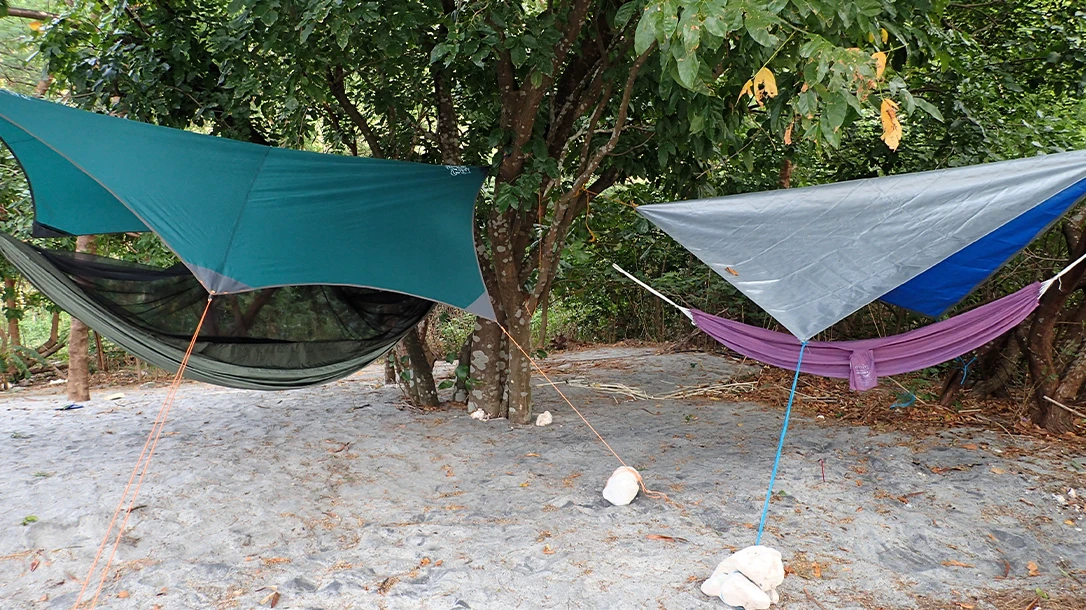
Advertisement — Continue Reading Below
Hammy, Banshee Wind, and Coral Fix
For over 17 years, I’ve trusted hammocks from Byer of Maine. Their Moskito Kakoon remains my go-to: a lightweight, insect-proof hammock that balances comfort with survival. At under 22 ounces, it’s longer than the old model, stitched tough, and reinforced to hold 275 pounds. The fine No‑See‑Um netting zips shut, spreads wide with removable bars, and packs down small. Two pockets stash essentials included, while the hammock flips for conventional use.
Byer also sent their new rain fly and Microrope system. Typically, I test gear before a trip, but this time I had no choice—straight from Australia to Asia with barely a day to swap bags. Shelter is critical, so I trusted the kit and went.
Site selection came first: no dead limbs overhead, no critter nests, near water and firewood. Wind was welcome, but setup still mattered. The Microrope proved simple—wrap, loop, adjust with the metal slider. Once I clipped the hammock in, I fine‑tuned the hang. Brazilian‑style hammocks need that banana curve; lie diagonally and you’re flat as a board.
Advertisement — Continue Reading Below
Stakes were useless in the sand, combined with the soaring winds. I even tried making longer stakes, but the wind was a banshee. I resigned to using large, heavy coral chunks to tie off to. It prevented me from becoming a kite over the South China Sea.
In the tropics, a mosquito net isn’t optional; it’s survival. Without one, you’ll spend the night flailing like a slapstick routine while risking malaria, dengue, or worse. The Kakoon’s integrated net, with three tie‑outs and spreader bars, kept the mesh off my face and the bugs at bay.
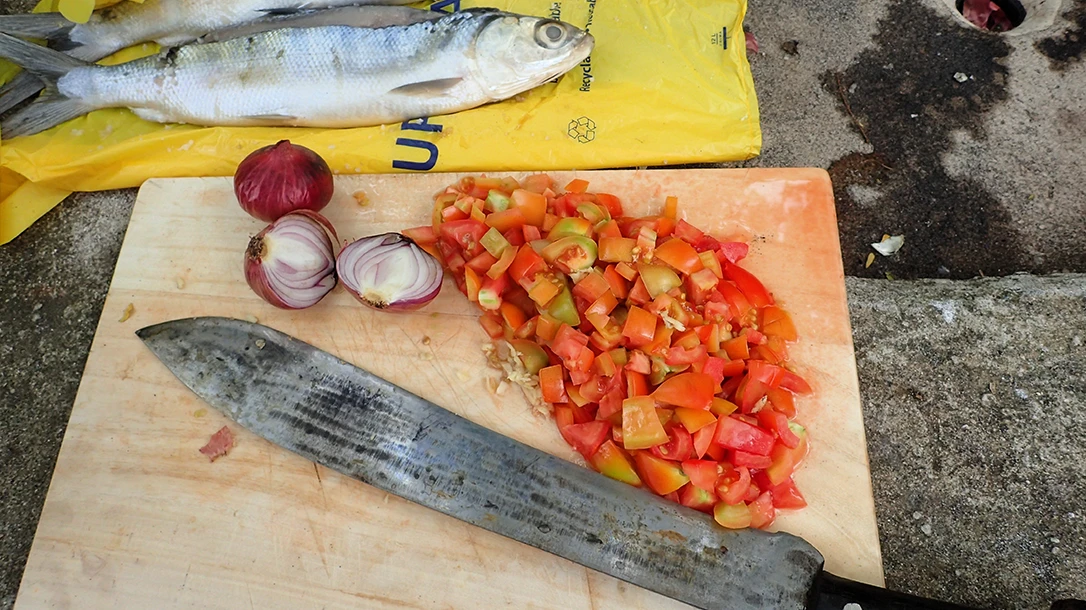
Advertisement — Continue Reading Below
Bolo Knife and Jungle Cookfest
I made sure to stop at the wet market to get supplies—food! I was researching and sampling local Filipino food for years, but now it was my turn to make it. I bought shrimp and chicken for BBQ skewers. I would make pork shoulder into Filipino adobo and my favorite fish, Bangus (Milkfish), for the grill. I got all the necessary ingredients, including onions, garlic, tomatoes, calamansi, and of course, rice. What I may have lacked in knowledge, I made up for with red wine in a bag.
Two local Aetas approached me and offered to bring me a live chicken. And if I paid a little more, they would butcher it for me. Deal! However, they never returned, not even to ask for a fee to be there or to kidnap me. But the trip wasn’t over yet. It was a good thing because I had raw chicken, fish, and pork without refrigeration—in the jungle!
Cooked food lasts longer and is safer than raw food in hot, humid weather. Salt and marinades helped with keeping food semi-safe until the next cooking shift. So, it was a cookfest the first day and a half into the night.
Advertisement — Continue Reading Below
I used the Filipino Bolo for most food and fire preparation, and my Swiss Army Camper assisted with fine details. The Filipino bolo is a rugged workhorse blade, forged there from recycled automobile spring steel into a 13‑inch edge built for chopping. Its handle (carabao horn scales) offers grip and heritage in one. Housed in a simple wooden sheath, this farm‑to‑field tool doubles as a kitchen knife, camp, and survival tool companion.
The Red Wine Defense for Pirates
The morning view from the hammock was indescribably stunning. I’ve rarely seen such contrasting colors as the various shades of brown in the jagged mountains and rocks. Along with the sky, its accompanying clouds, and white sands, and how could I forget, the blue sea? I bathed in it, washed my clothes in it, and marveled at the glow from the night stars. Only Alaska and the deserts of the Southwest have come close to what my eyes saw. Except for one morning, a boat was on the shore, and several men were approaching. Time to be calm, slow down, and think.
Each seaman or would-be pirate kidnapper carried a 5-gallon paint bucket. They saw my odd camp and probably thought I was marooned on the island or homeless. I glassed them from the hammy and eventually had to get out and show myself. After a smile and a wave, which works most of the time, I tended to my rustic, simple, yet functional kitchen setup. I had an Uberleben Kessel Bushpot, a small grill, and bamboo utensils I crafted with the bolo and Swiss Army Knife. The night before, I shaved wood and filled my Uberleben pot bag with tinder. This way, I would be fire-ready. That’s one of my nightly camp routines.
Behold! Fire
I never had my back to them on the beach. As I was about to strike the Ferro rod and get the fire going, I saw one guy approaching. He asked if this is how we started fires in my country. I answered, “Sometimes.” Now, I had an audience, and still felt that paint bucket bandits might kidnap me.
One guy asked me, in his best broken English, if that was blood hanging from the makeshift bamboo awning. They looked scared, so was I. They told me they were afraid I might be a crazy person performing a ritual. I jokingly said, “Yes,” but didn’t want to push my luck, so I told them it was red wine and offered them some.
Red wine in a bag kept them away. Who would have ever thought? If it helps you out, well, it helps you out!
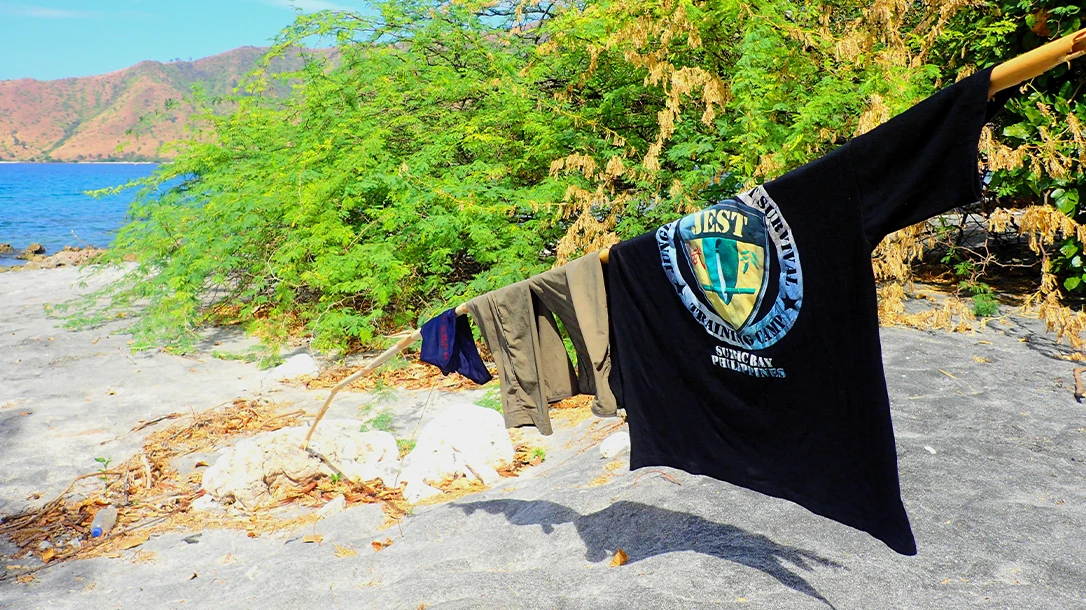
Pick Up Day!
On the final day, I woke to another boat approaching the beach. Could it be kidnappers rushing to claim their prize? Did someone let them know on the first day? If so, did they travel from Mindanao for 2 days and just arrive?
With my bolo in hand as I was getting ready to ignite the morning campfire, it got closer. I saw the friendly captain waving and started breaking camp. This trip was another successful wild adventure in the books—without a kidnapping. Only stories to process and relay remained, and an appetite for more adventures.
So long to the Philippines. Let’s see what I can get into next time!
